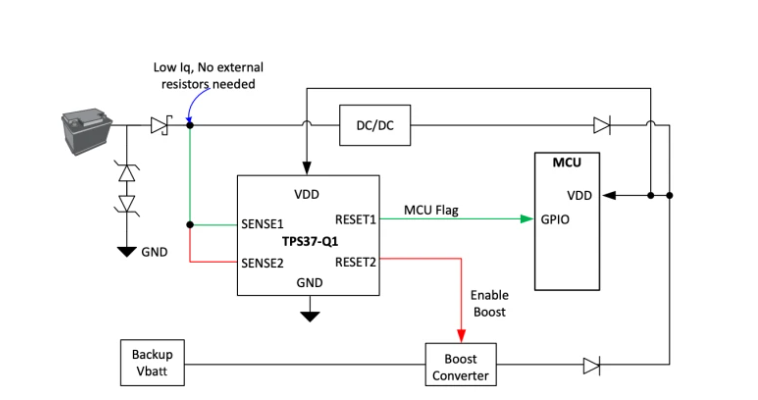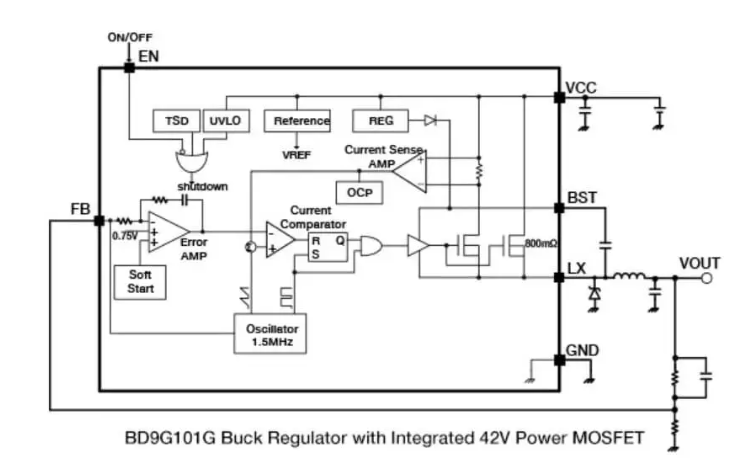
In the process of achieving the "dual-carbon" goal of "carbon peaking" and "carbon neutrality", the widespread existence of iot devices is an important starting point. According to a report released by market research firm IoT Analytics, the number of global iot connections will reach 14.3 billion in 2022. That number is expected to grow another 16 percent to 16 billion by 2023.
Figure 1: Global iot device statistics and future predictions

In summary, the Internet of Things can help industries achieve the goal of "dual carbon" in three ways. The first is to achieve energy reduction and efficiency through the intelligent Internet of Things, under this concept, old and new equipment will be gradually connected to the Internet of Things system; The second is to make more applications free from the limitations of battery power supply through passive Internet of things, and further enhance the penetration rate of Internet of Things in various industries while reducing the consumption of battery raw materials; The third is that the Internet of Things helps to achieve efficient management of new energy systems and reduce carbon emissions from energy sources.
Among these three initiatives, the deployment of Internet of Things solutions will use a variety of energy-saving technologies, which will also use a rich variety of electronic components. In this article, we will focus on the excellent electronic components on sale and see what types of components will play an important role and value in the "dual carbon" process.
Low-power iot that can be deployed quickly is key
As mentioned above, achieving energy reduction and efficiency through intelligent iot has become the trend and consensus of the future development of all walks of life. In the past, equipment in construction, industry, transportation and other fields had problems such as incomplete energy consumption data and independent information, which was not only difficult to manage, but also had obvious energy waste problems. The emergence of the Internet of Things has solved this problem well, through the collection, storage, transmission, analysis and decision-making of data, to achieve the visualization and information of energy management, and thus achieve energy conservation and emission reduction.
The architecture of the Internet of Things is roughly divided into three layers, namely, the application layer, the service layer and the network layer. Among them, the application layer is mainly composed of various devices, and then the system composed of device interconnection; The service layer is divided into modeling service layer and communication basic service layer, which is mainly used to realize the construction of system application scheme, including network, underlying protocol and hardware. The network layer, as the name implies, provides network communication between devices.
Through the above deployment, we can break the information island problem in the original system, achieve unified deployment and unified management, and then find the key nodes to gradually optimize the energy consumption of the system.
Of course, in the specific solution development process, there are two points that are very important: the additional iot system added between devices needs to have low power consumption attributes, so as to avoid additional energy consumption burden on the system; Iot systems need to be easy to develop to prevent secondary information silos from emerging in new systems.
Texas Instruments CC2652P74T0RGZR, a wireless MCU, is a multi-protocol wireless MCU, part of the TI SimpleLink MCU platform. Protocols supported by the device include Thread, Zigbee, Matter, Bluetooth 5.2 Low Power, IEEE 802.15.4, ipv6-enabled Smart Objects (6LoWPAN), and TI The 15.4-Stack (2.4GHz) and concurrent multi-protocol implementations via Dynamic Multi-protocol Manager (DMM) drivers make it suitable for rich iot application scenarios.
Figure 2: CC2652P74T0RGZR

CC2652P74T0RGZR has been specifically enhanced in terms of low power consumption and stability. The device has systematic low power performance, supports 3.10mA active mode, and performs 65µA/MHz when running CoreMark. Low standby current of 0.9µA while maintaining 144KB of RAM. The device also supports 0.1µA off mode, which can be set for pin wake-up.
In addition, the CC2652P74T0RGZR also has an autonomous MCU based on the 4KB SRAM built by Arm Cortex-M0, which serves as an ultra-low power sensor controller and can quickly wake up to low-power operation to complete the work of sampling, storing and processing sensor data. The sensor controller delivers 29.2µA in 2MHz mode and 799µA in 24MHz mode.
Figure 3: CC2652P74T0RGZR system block diagram

CC2652P74T0RGZR can ensure the stable operation of iot systems for a long time. The device has a low SER (soft error rate) FIT (time base failure) for extended operating life. At the same time, the built-in SRAM parity function is always on, which further reduces the risk of damage due to potential radiation events. TI has a product Life cycle policy to ensure that products including CC2652P74T0RGZR have a product life cycle of 10 to 15 years or longer.
Of course, while guaranteeing low power consumption and durability, the CC2652P74T0RGZR does not sacrifice system performance and ease of use. The device features a powerful 48MHz Arm Cortex-M4F processor, 704KB flash program memory, and 256KB ROM. With efficient built-in PA, the TX supports +10dBm (21mA) and +20dBm (101mA) output power in the 2.4GHz band. The CC2652P7 has a reception sensitivity of -104dBm (for a 125kbps Bluetooth Low power encoded PHY).
As part of the SimpleLink MCU platform, the CC2652P74T0RGZR is also easy to use. This MCU platform includes Wi-Fi, Bluetooth Low Energy, Thread, Zigbee, Wi-SUN, Amazon Sidewalk, MIOTY, Sub-1GHz MCUS, and host MCUS. The CC2652P74T0RGZR is specifically part of the scalable product family (32KB to 704KB of flash memory) with pin-to-pin compatible package options.
Devices within the SimpleLink MCU platform support flexible migration through the CC13xx and CC26xx software development Kits (SDKS) and SysConfig system configuration tools. In addition, the rich software stack, application examples and SimpleLink Academy training courses can help users significantly reduce the development cycle.
Based on the above advantages, iot users in areas such as grid infrastructure, building automation, retail automation, personal electronics and medical applications can enjoy the low-power wireless communication and advanced sensing capabilities brought by the CC2652P74T0RGZR.
Accurate detection of energy consumption makes high-energy-consuming equipment invisible
After the deployment of the system is completed, the work is not over, since the Internet of Things solution is actually in a dynamic optimization process, one of the monitoring and optimization items is power consumption.
Under the "dual carbon" goal, the deployment of Internet of Things systems in various industries is not simply to let the equipment network, but also to have a lot of intelligent capabilities, and then create a lot of small systems under the entire large system, including energy consumption monitoring systems based on Internet of Things technology.
Energy consumption monitoring system is currently very mature, for example, in smart factories, air conditioning, ventilation, lighting, production line equipment and other basic will be monitored, and then through the cloud platform for accurate monitoring and analysis of various types of equipment, in order to continuously reduce the cost of system operation, to achieve the goal of reducing energy efficiency.
In the Internet of Things system, the deployment of the energy consumption monitoring system has been very in-depth, and the details of each subsystem will be monitored, so this is actually a very test of the ability of the components in the system. Next, there is a high-precision voltage detector for low-power system monitoring, also from the manufacturer TI, the device is part number TPS37AB7806FDSKRQ1.
Figure 4: Texas Instruments TPS37xx low power high precision voltage detector

TPS37AB7806FDSKRQ1 is a low-power, high-precision, miniaturized dual-channel voltage detector. The SENSE1 and SENSE2 pins on the device have hysteresis characteristics at input to suppress short burr pulses, thus ensuring stable output operation without error triggering.
The TPS37AB7806FDSKRQ1 provides tunable sensing input characteristics, achieved with an external resistance divider configuration. When the input voltage of SENSE1 or SENSE2 is lower than the drop threshold, OUT1 or OUT2 correspondingly drops to the low level. When SENSE1 or SENSE2 rises above the rise threshold, OUT1 or OUT2 correspondingly becomes high.
With an ultra-low static current of 2µA (typical), the TPS37AB7806FDSKRQ1 provides an accurate, high-precision and space-saving voltage detection solution for low-power system monitoring.
Figure 5: Typical application circuit of TPS37AB7806FDSKRQ1

In addition to low-power system monitoring for system circuits such as DSPS, microcontrollers and microprocessors, the TPS37AB7806FDSKRQ1 can also be used in portable medical devices, building automation, solid state drives, portable charging devices and other fields. At the same time, the TI TPS37xx-Q1 series is AEC-Q100 certified and can also be used in automotive applications.
Low standby power iot solutions are the trend of The Times
Under the "dual carbon" goal, the components dedicated to low-power design are on the one hand to reduce the operating power consumption of the system, on the other hand, to extend the standby time of the system, and to allow the system to enter the standby state with very low power consumption. From the perspective of the Internet of Things, the system is not always in external communication, many times the system has been waiting for the command to trigger the power supply, do not perform any function, this time to reduce the standby power consumption to reduce the total power consumption of the system help greatly.
For the MCU, many times in order to reduce the standby power consumption, the MCU in the standby state is not only the CPU stops working, the program status word PSW accumulator, ACC and all general purpose registers are usually frozen to reduce the standby power consumption. At the same time, the peripheral circuit also needs to be coordinated.
The device described below is from the manufacturer ROHM Semiconductor, part number BD9B500MUV-E2, for very low standby power consumption.
Figure 6: BD9B500MUV-E2

The BD9B500MUV-E2 is one of ROHM Semiconductor's BD9x integrated MOSFET DC-DC buck converters. This family of devices is a synchronous buck switching regulator with built-in power MOSFETs, providing a current range from 1A to 6A, with a constant on-time control system, providing fast transient response, resulting in high oscillation frequencies at low inductance. These devices use the original constant on-time control method and have low power consumption at light loads.
Figure 7: Typical application circuit of ROHM Semiconductor BD9x integrated MOSFET DC-DC buck converter

Combined with these performance benefits, the ROHM Semiconductor BD9x integrated MOSFET DC-DC buck converter is ideal for devices that require extremely low standby power consumption, ranging from 0µA (typical) to 10µA (maximum). At the same time, this series of devices provide a wealth of protection functions, including overcurrent protection, short circuit protection, thermal shutdown protection, undervoltage blocking protection.
Under the "two-carbon" target,The future of the Internet of Things is promising
The above content is mainly around the application side to do analysis, in fact, as mentioned in the beginning, on the energy supply side, the value of the Internet of Things is also immeasurable. The International Energy Agency pointed out in the new "renewable Energy Market Update report" that due to policy support, rising fossil fuel prices, and the active promotion of solar and wind power generation projects, it is expected that the global installed capacity of renewable energy will increase by one-third in 2023, and the global renewable energy generation will continue to grow next year.
With the huge demand of the energy supply side and the market application side, the future deployment space of the Internet of Things solution is huge, and the Internet of Things technology will also become the key technology in the energy supply, and then help various industries to complete their own "double carbon" goals.
Heisener Electronic is a famous international One Stop Purchasing Service Provider of Electronic Components. Based on the concept of Customer-orientation and Innovation, a good process control system, professional management team, advanced inventory management technology, we can provide one-stop electronic component supporting services that Heisener is the preferred partner for all the enterprises and research institutions.
